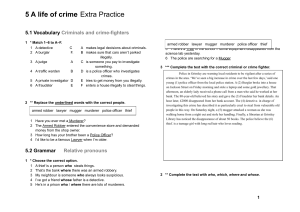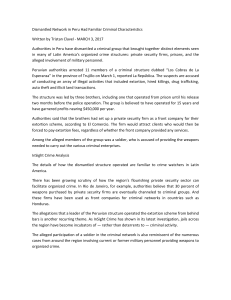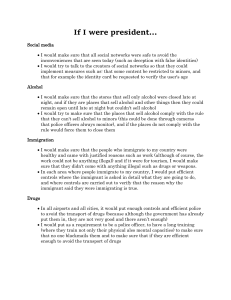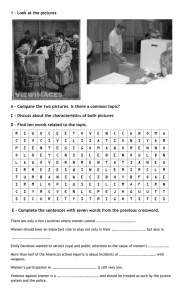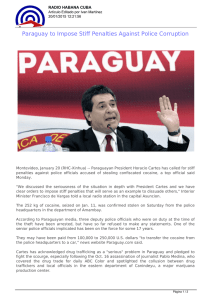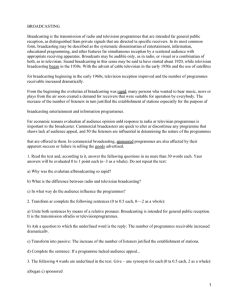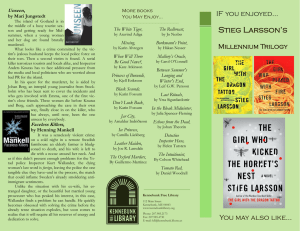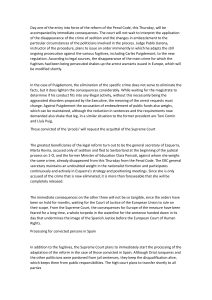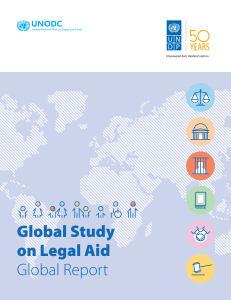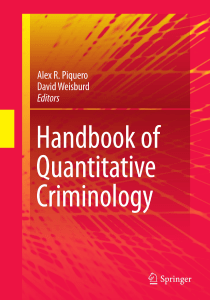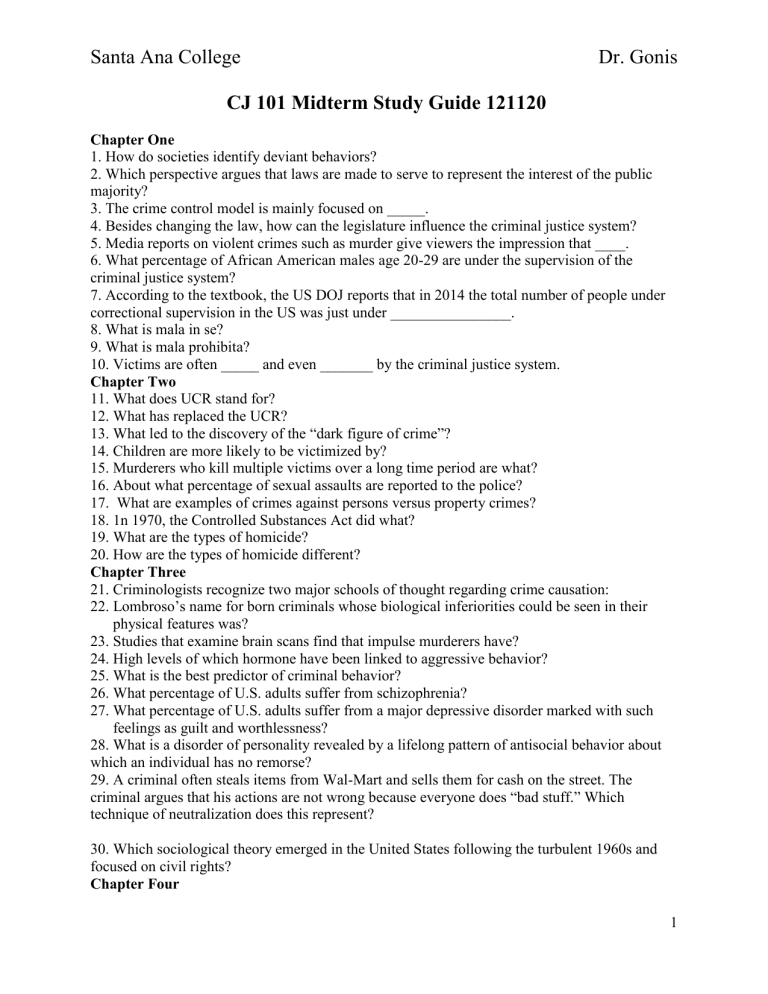
Santa Ana College Dr. Gonis CJ 101 Midterm Study Guide 121120 Chapter One 1. How do societies identify deviant behaviors? 2. Which perspective argues that laws are made to serve to represent the interest of the public majority? 3. The crime control model is mainly focused on _____. 4. Besides changing the law, how can the legislature influence the criminal justice system? 5. Media reports on violent crimes such as murder give viewers the impression that ____. 6. What percentage of African American males age 20-29 are under the supervision of the criminal justice system? 7. According to the textbook, the US DOJ reports that in 2014 the total number of people under correctional supervision in the US was just under ________________. 8. What is mala in se? 9. What is mala prohibita? 10. Victims are often _____ and even _______ by the criminal justice system. Chapter Two 11. What does UCR stand for? 12. What has replaced the UCR? 13. What led to the discovery of the “dark figure of crime”? 14. Children are more likely to be victimized by? 15. Murderers who kill multiple victims over a long time period are what? 16. About what percentage of sexual assaults are reported to the police? 17. What are examples of crimes against persons versus property crimes? 18. 1n 1970, the Controlled Substances Act did what? 19. What are the types of homicide? 20. How are the types of homicide different? Chapter Three 21. Criminologists recognize two major schools of thought regarding crime causation: 22. Lombroso’s name for born criminals whose biological inferiorities could be seen in their physical features was? 23. Studies that examine brain scans find that impulse murderers have? 24. High levels of which hormone have been linked to aggressive behavior? 25. What is the best predictor of criminal behavior? 26. What percentage of U.S. adults suffer from schizophrenia? 27. What percentage of U.S. adults suffer from a major depressive disorder marked with such feelings as guilt and worthlessness? 28. What is a disorder of personality revealed by a lifelong pattern of antisocial behavior about which an individual has no remorse? 29. A criminal often steals items from Wal-Mart and sells them for cash on the street. The criminal argues that his actions are not wrong because everyone does “bad stuff.” Which technique of neutralization does this represent? 30. Which sociological theory emerged in the United States following the turbulent 1960s and focused on civil rights? Chapter Four 1 Santa Ana College Dr. Gonis 31. How is criminal law distinguished from civil law? 32. The standard of proof in a criminal case is ______. 33. What are the categories of laws in the US? 34. An infraction is defined as_______. 35. What crime may result in a death sentence. 36. What are the legal elements of a crime? 37. What do prosecutors have to prove in a criminal case? 38. What is the most commonly used insanity defense? 39. According to this insanity standard, the defendant is unable to distinguish right from wrong. 40. ________ is the criminal intent or mental state of the defendant at the time of the crime. Chapter Five 41. What is the mission of preventive patrol? 42. What are the two general staffing classifications of in policing? 43. ________ means there is a lack of coordination among law enforcement agencies. 44. Police officers must not abuse the authority that is entrusted them. As it relates to misconduct that authority authorizes them to _______. 45. Training requirements for local law enforcement agencies are usually determined by 46. Police occupational subculture is a set of beliefs held by 47. The ________ places loyalty to fellow officers above all other values. 48. ________ allows officers to act in a manner they judge most appropriate in a given situation. 49. What is the legal definition of racial profiling? 50. The key to a successful investigation of police misconduct means? Chapter Six 51. Maintaining order is also known as: 52. ________ is a policing strategy proposed by Herman Goldstein that emphasizes discovering the underlying dynamics of crime. 53. ________ is a policing strategy that depends on getting community members to address the problems that plague their neighborhoods. 54. What are the four components of SARA, a model of problem-oriented policing? 55. Wilson and Kelling’s broken windows theory argues that there is a relationship between higher crime rates and 56. Newly appointed deputy sheriffs are usually first assigned to what assignment? 57. ________ is the line of authority that extends throughout the organization. 58. Municipal policing agencies receive most of their funds from ______. 59. Police use geographic information systems (GIS) to produce descriptions of crime occurrences and analyze the relationships between variables such as 60. Which demographic (types of persons) is most supportive of law enforcement? 61. Why did a large number of institutions for the mentally ill close? 62. What are the three ways that officers generally respond when encountering a person whose behavior appears irrational? 63. Who performs the bulk of police work? Chapter Seven 64. The ________ Amendment protects residents from unreasonable searches and seizures. 65. A Terry stop is permitted when police have ________ to believe that a person is engaged in criminal activity. 66. The exclusionary rule means what? 2 Santa Ana College Dr. Gonis 67. When is the Miranda warning required? 68. What three key (Supreme Court) cases regulate police use of force? 69. Which US Supreme Court case regulates the use of deadly force? 70. Mandatory arrest policies were created to help reduce police discretion in incidents of: 71. A police officer is experiencing high levels of job-related stress. The single most important factor to deal with this stress is _______. 72. According to case law, what factors determine if police use of force was reasonable? 73. The situations that pose the greatest threat to officer safety are? 74. ________ is needed to obtain a warrant or conduct most searches and seizures. 75. A police detective is interrogating a male suspect about a rape. The detective reads the suspect his Miranda rights and the suspect does not waive his rights. The detective disregards the suspect’s waiver and eventually the suspect tells the detective what happened. Which amendment is Detective Villanueva violating? 3
